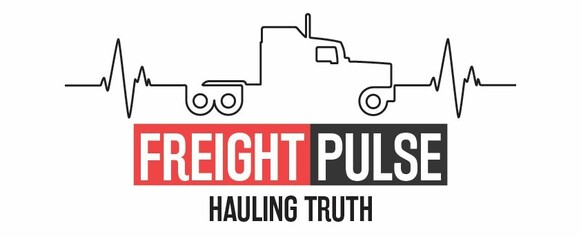Tolls Aim to Reduce Traffic and Support Public Transit. Does the trucking industry have reason to celebrate?
On February 19, the Trump administration ordered an end to New York City’s congestion pricing tolls, which were designed to ease traffic congestion and generate funding for public transit by charging drivers to enter Manhattan’s busiest areas.
The tolling system, implemented on January 5, utilizes license plate readers to charge most vehicles a $9 fee for entering Manhattan below Central Park. Transit officials initially reported a slight but noticeable decrease in traffic as a result of the program.
However, the federal government has now withdrawn its approval. U.S. Transportation Secretary Sean P. Duffy announced the decision, criticizing the toll as an unfair financial strain on working-class residents and small business owners.
According to the statement, the Federal Highway Administration will collaborate with state officials to facilitate a “systematic shutdown” of the tolls.
In response, the Metropolitan Transportation Authority (MTA), which oversees New York City’s subways and other transit services, swiftly filed a federal lawsuit to prevent the rollback of congestion pricing.
Governor Kathy Hochul, a Democrat, affirmed that the program would remain in effect while legal proceedings unfold.
President Trump, whose Trump Tower residence and other properties are situated within the congestion pricing zone, had vowed to eliminate the toll as soon as he assumed office. Following the Department of Transportation’s announcement, he took to his Truth Social platform to celebrate the move.
“CONGESTION PRICING IS DEAD. Manhattan, and all of New York, is SAVED,” Trump posted, adding, “LONG LIVE THE KING!”
Hochul promptly responded.
“New York hasn’t had a king in over 250 years,” she remarked at a press conference at Grand Central Terminal. “And we certainly aren’t going to start now.”

Similar congestion pricing systems have been in place in cities worldwide, including London, Stockholm, Milan, and Singapore, encouraging public transportation usage by making it more expensive to drive. However, New York City was the first U.S. city to introduce such a measure.
The revenue generated from the tolls was intended to secure bonds that would help finance extensive upgrades and repairs to the city’s aging, financially strained transit system, which serves roughly 4 million daily riders.
Like other global congestion pricing models, New York’s fee structure varies depending on the time of day and vehicle size. Larger trucks incur higher charges, while most vehicles pay a reduced fee of $2.25 during late-night hours less than the price of a subway fare.
The program has faced sharp divisions, with opposition mainly from suburban commuters and residents in areas lacking sufficient subway access.
Meanwhile, environmentalists and transit advocates championed it as a progressive initiative to curb air pollution and prioritize road space for essential vehicles, such as emergency services and delivery trucks.
“By blocking this proven policy, Trump is directly responsible for increased traffic congestion, more accidents, dirtier air, slower buses, and a loss of crucial transit funding,” said State Senator Andrew Gounardes, a Democrat from New York City.
Originally passed by New York legislators in 2019, the congestion pricing plan was delayed for years, awaiting federal environmental clearance during Trump’s previous term. It ultimately secured approval under the Biden administration.
Prior to its launch, the tolling initiative withstood multiple legal challenges. Democratic New Jersey Governor Phil Murphy opposed the plan, taking it to court and writing to Trump on his first day in office, urging him to revoke it.
Even Hochul had hesitations. Last June, she abruptly delayed the program’s debut, citing economic concerns. However, following Trump’s re-election, she reinstated the toll in November but reduced the standard rate from $15 to $9.
Since then, Hochul has consistently defended the program and discussed it multiple times with the president.
New York City Mayor Eric Adams, also a Democrat, previously supported congestion pricing but has recently distanced himself from the issue, seemingly reluctant to engage in the growing conflict between Trump and the state.
“If the federal government has the authority to act within its powers, we can’t just complain about it we exercise our own authority all the time,” Adams told reporters last month when asked about Trump’s potential interference in the program.
Izaguirre reported from Albany, N.Y. Associated Press writer Jennifer Peltz contributed to this report.
World cities with similar toll programs:
North America – Toronto, Canada (Limited High-Occupancy Toll Lanes) – Not full congestion pricing but tolls for express lanes.
Europe – London, UK – One of the earliest adopters (2003); charges apply in the central zone.
– Stockholm, Sweden – Introduced in 2007 after a trial period.
– Gothenburg, Sweden – Implemented in 2013.
– Milan, Italy – Has an “Area C” charge for the city center.
– Oslo, Norway – Tolls to reduce traffic and pollution.
– Bergen, Norway – Similar toll system to Oslo.
– Trondheim, Norway – Uses electronic tolling for congestion control.
– Valletta, Malta – Charges based on time spent within the zone.
Asia – Singapore – First city to introduce electronic road pricing (ERP) in 1998.
– Beijing, China (Proposed) – Considering congestion pricing for pollution control.
– Shanghai, China – Uses license plate auctions, but full congestion pricing is being considered.
Australia – Sydney (Proposed)
– Melbourne (Proposed)

